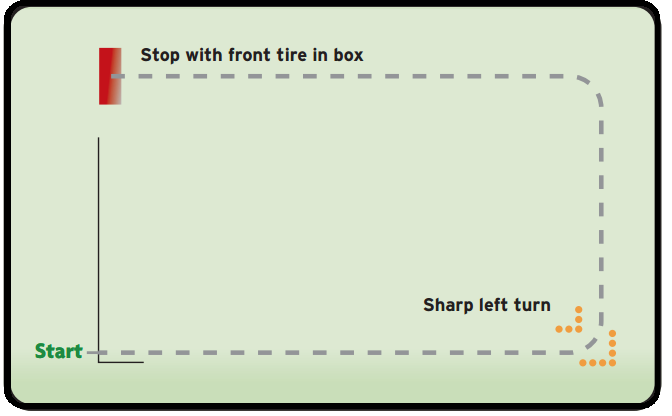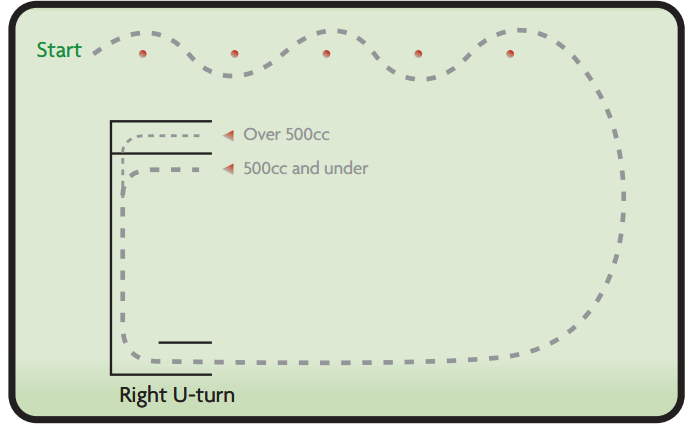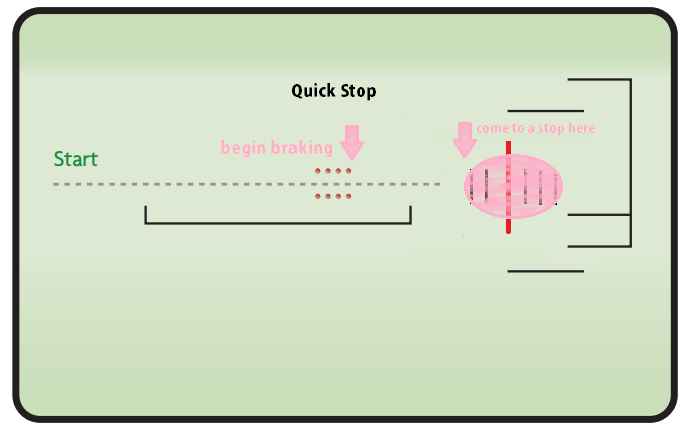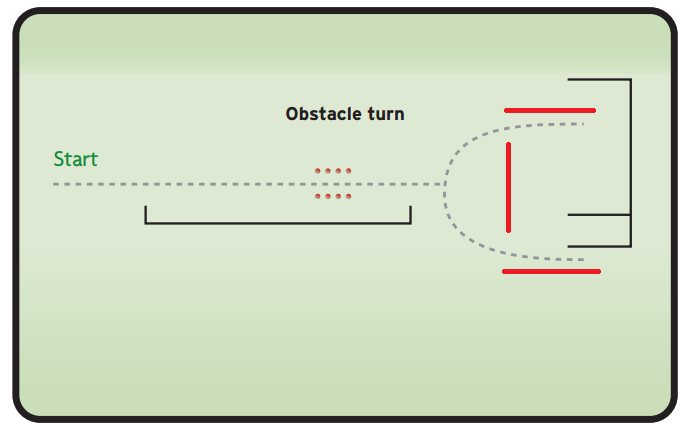The NJ DMV motorcycle road test is divided into four parts.
You will be tested on basic riding skills which include balancing, tight turns, weaving through obstacles, and controlled braking. The test can seem like a confusing and daunting task when you first arrive at the DMV with your own motorcycle given the tight spacing of the obstacles. However, with the proper tools and an easy to maneuver motorcycle such as a scooter, the test is relatively easy to pass.

Start from stop. Once the instructor gives you the signal you proceed to ride at any speed you feel comfortable in. You will maneuver the motorcycle through a sharp left turn without touching the boundary lines. Following another left turn you will meet a straightaway and be expected to come to a smooth, slow stop with your front tire in the box. Skidding is not allowed for this test and can count against you.

Start from a stop. Once the instructor gives you the signal, you will be expected to maneuver through a series of five cones in staggered position about eight feet apart from each other. The key is to keep a steady speed and avoid a choppy throttle. A steady speed will make it easier to predict and maneuver through your next cone. After completing the slalom, you will be expected to make a tight right u-turn within set boundaries. Keep in mind that if taking the test on a bike that is smaller than 500cc’s, you will have a smaller box to maneuver in.

Start from a stop. Once instructor gives you the signal, you take off going between 12 – 20 mph. At the first arrow, there will be two cones on either side where you will let go of the gas and begin braking quickly. The goal here is to be able to come to a quick, smooth stop within the outlined circle without losing control of the motorcycle. Skidding is allowed in this test and does not count against you.

The fourth and final test is similar to test 3, but instead of stopping as soon as you can, you have to avoid the red line by swerving around it. The instructor will let you know in which direction to swerve before taking off from the starting position. The object of this test is to see if you can avoid an obstacle at a set speed while staying within the boundary red lines on either side of the horizontal.
Disclaimer
It is important to remember that just because you have the endorsement on your license; it does NOT mean that you are ready to ride anywhere at any time. You still must think about the skills you learned, understand your limits, and exercise personal responsibility.